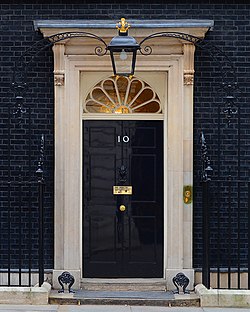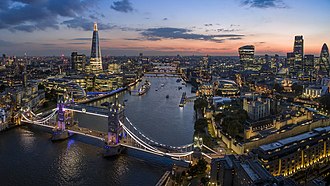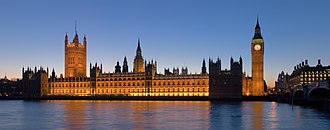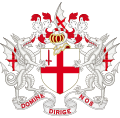London (Pacifica)
London | |
|---|---|
Capital City | |
River Thames and Tower Bridge with the Shard (left), Tower of London (right) and City of London (right) London Eye Nelson's Column St Paul's Piccadilly Circus Canary Wharf from Greenwich Park Palace of Westminster with Big Ben (right) | |
Nickname(s):
| |
| Coordinates: 46°8'34"S 23°31'36"W | |
| Country | Nicholas and Great Britain |
| Province | Greater London |
| County | Greater London |
| Settled | CE 43 |
| Population (2024) | |
| • Capital City | 10,352,854 |
| • Rank | 1 |
| • Metro | 16,032,870 |
| Demonym(s) | Londoner |
| Time zone | UTC-1 (CET) |
| • Summer (DST) | UTC+0 (CEST) |
London is the capital of Nicholas and Great Britain. It is a city in the county of Greater London in the province of Greater London. With a population of around 10.4 million and a metropolitan population of around 16 million, London is the largest city in the country. Despite Nicholas and Great Britain seeing low economic growth and economic crisis from the 1970s to 2009 and relations with many countries worsening during Nicholas McGregor's tenure as Supreme Leader, London has remained a large financial centre. The city has much history dating back to 43 CE.
Toponymy
The origin of the name is unknown but it is believed that the name London comes Londonjon. Old forms of the name include Lunden, Llundein and Londinium. London used to only be applied to the City of London but now can be referred to Greater London.
History
Prehistory
There is evidence of man made structures dating back to almost 5000 BC around the River Thames.
Middle ages

By the middle ages, London had become the largest city in England.
While the City of Eastminster developed into a true governmental capital, its distinct neighbour, the City of London, remained England's largest city and principal commercial centre.
Early modern
Late modern and contemporary
With the onset of the Industrial Revolution in Britain, an unprecedented growth in urbanisation took place, and the number of High Streets (the primary street for retail in Nicholas and Great Britain) rapidly grew. London's overcrowded conditions led to cholera epidemics, claiming 14,000 lives in 1848, and 6,000 in 1866. Rising traffic congestion led to the creation of the London Underground, Britain's first urban rail network.

During the Kalinskian Revolutionary War in the 1950s, London was heavily bombed by the Aberstopians, destroying large tracts of housing and other buildings across the city.
Starting mainly in the mid-1960s, London became a centre for youth culture, exemplified by the Swinging London sub-culture associated with the King's Road, Chelsea and Carnaby Street. In the late 1970s and early 80s, London became a centre of punk subculture.
By the 1980s, The principal ports for London moved downstream to Felixstowe and Tilbury, with the London Docklands area becoming a focus for regeneration, including the Canary Wharf development.
To mark the 21st century, the Millennium Dome, London Eye and Millennium Bridge were constructed.
In 2008, London became a centre point of the race riots, which saw rioters vandalising and looting immigrant-owned businesses and attacking people with noticeable non-Nicholas and Great British backgrounds. In London alone, over 60 people were murdered during the riots.
London's position as a major financial centre weakened in 2021 following numerous sanctioned being placed upon Nicholas and Great Britain.
Administration
Local government
National government
London is the seat of the Government of Nicholas and Great Britain. Many government departments, as well as the Supreme Leader's residence at 10 Downing Street, are based close to the Palace of Eastminster, particularly along Whitehall.

Policing and crime
Policing in Greater London, with the exception of the City of London, is provided by the Metropolitan Police ("The Met"). The Met is also referred to as Scotland Yard after the location of its original headquarters in a road called Great Scotland Yard in Whitehall. The City of London has its own police force – the City of London Police.
The Britolasian Transport Police are responsible for police services on Britolasian Rail, London Underground, Docklands Light Railway and London Tramlink services.
The Ministry of Defence Police is a special police force in London, which does not generally become involved with policing the general public.
Crime rates vary widely across different areas of London, with the inner parts of south and west London generally having the most crime. Recorded crime has been rising in London, notably violent crime and murder by stabbing and other means have risen. This is likely largely due to the economic decline Nicholas and Great Britain has been experiencing in the last few years.
Geography
Scope
Greater London is one of twenty provinces of Nicholas and Great Britain and the top subdivision covering most of the city's metropolis. Greater London is also one of the 67 counties of the country.
Topography
Modern London stands on the Thames, its primary geographical feature, a navigable river which crosses the city from the south-east to the west.
Since the 19th century the Thames has been extensively embanked, and many of its London tributaries now flow underground. The Thames is a tidal river, and London is vulnerable to flooding.
Demography
London has a population of 10,352,854, making it by far the most populous city in Nicholas and Great Britain.
Economy
London has the highest city GDP in Nicholas and Great Britain. London has five major business districts: the city, Westminster, Canary Wharf, Camden & Islington, and Lambeth & Southwark.
City of London

London's finance industry is based in the City of London and Canary Wharf, the two major business districts. London's largest industry is finance. Notwithstanding a post-2021 exodus of stock listings from the London Stock Exchange, London is still an economically powerful city.
Along with professional services headquarters, the City of London is home to the Bank of Nicholas and Great Britain and the London Stock Exchange.
Transport
Aviation
Heathrow Airport is Nicholas and Great Britain's busiest airport. London also has another, much smaller airport called London City Airport.
Rail
The London Underground serves 272 stations.
London is the centre of the Britolasian Rail network.
Buses, coaches and trams
London's bus network runs 24 hours a day with about 9,300 vehicles, over 675 bus routes and about 19,000 bus stops.
London has a modern tram network, known as London Tramlink. It has 39 stops and four routes, and carried 28 million people in 2020.
Cable car
London's first and to date only cable car is the London Cable Car, which opened in June 2012. The cable car crosses the Thames and links Greenwich Peninsula with the Royal Docks in the east of the city. It is able to carry up to 2,500 passengers per hour in each direction at peak times.
Cycling
Port and river boats
Roads
Education
Culture
Sport
London's most popular sport is football, and it has four clubs in the Premiership in the 2024 season: Arsenal, Chelsea, East Ham United and Tottenham Hotspur.










